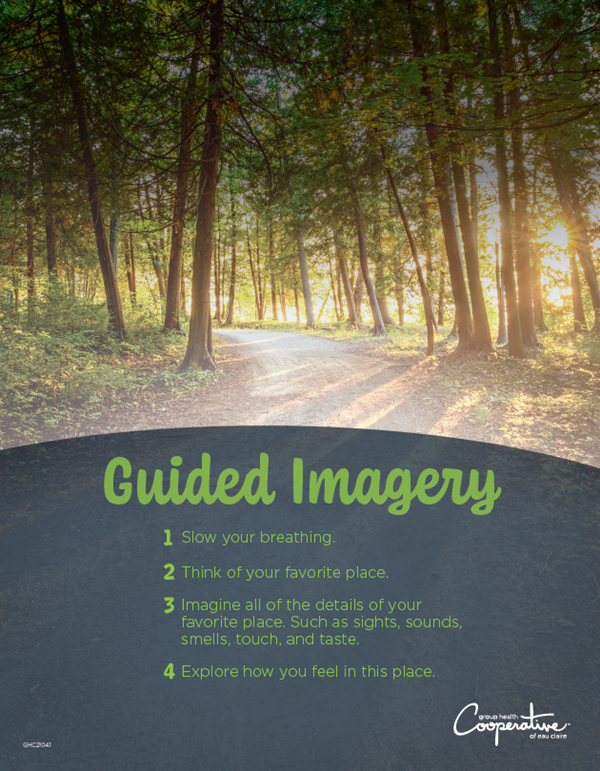Guided imagery is a mindfulness practice for relaxation and stress management. During this practice, you focus your attention on positive images and thoughts to achieve a state of calm and relaxation. Using your senses during guided imagery can help create the most accurate image or scenery – sight, sound, smell, touch, and taste, if possible. The more specific the imagery is, the more helpful it will be. This mindfulness technique can be used anytime – during moments of stress or when needing to calm down after a long, stressful day. It can be practiced individually or in a group setting.
Some of the benefits of guided imagery can include:
- Decreased stress on the mind and body – slowed heart rate and breathing, lowered blood pressure, and reduced muscle tension.
- Improved concentration and mood.
- Better managed negative ideas, feelings, and experiences.
- Increased resilience after a stressful situation or experience.
- Improved coping skills to better handle future stress.
Here are a few tips to get you started with guided imagery:
- Find a quiet place with minimal distractions to practice. Turn off your phone or other potential distractions.
- Get into a comfortable position, either sitting or lying down. You may close your eyes or darken the room.
- Focus on long, deep breaths that inhale through the nose and exhale through the mouth.
- Follow a guide like the one below, and play a guided imagery video or recording to help walk you through the exercise.
- Plan time to practice into your day.
- Like any mindfulness technique, it takes practice to become part of your regular stress relief routine. The more you practice, the easier it will become. Start with a few minutes of guided imagery each day and slowly build upon it.

By,
Coach Sarah